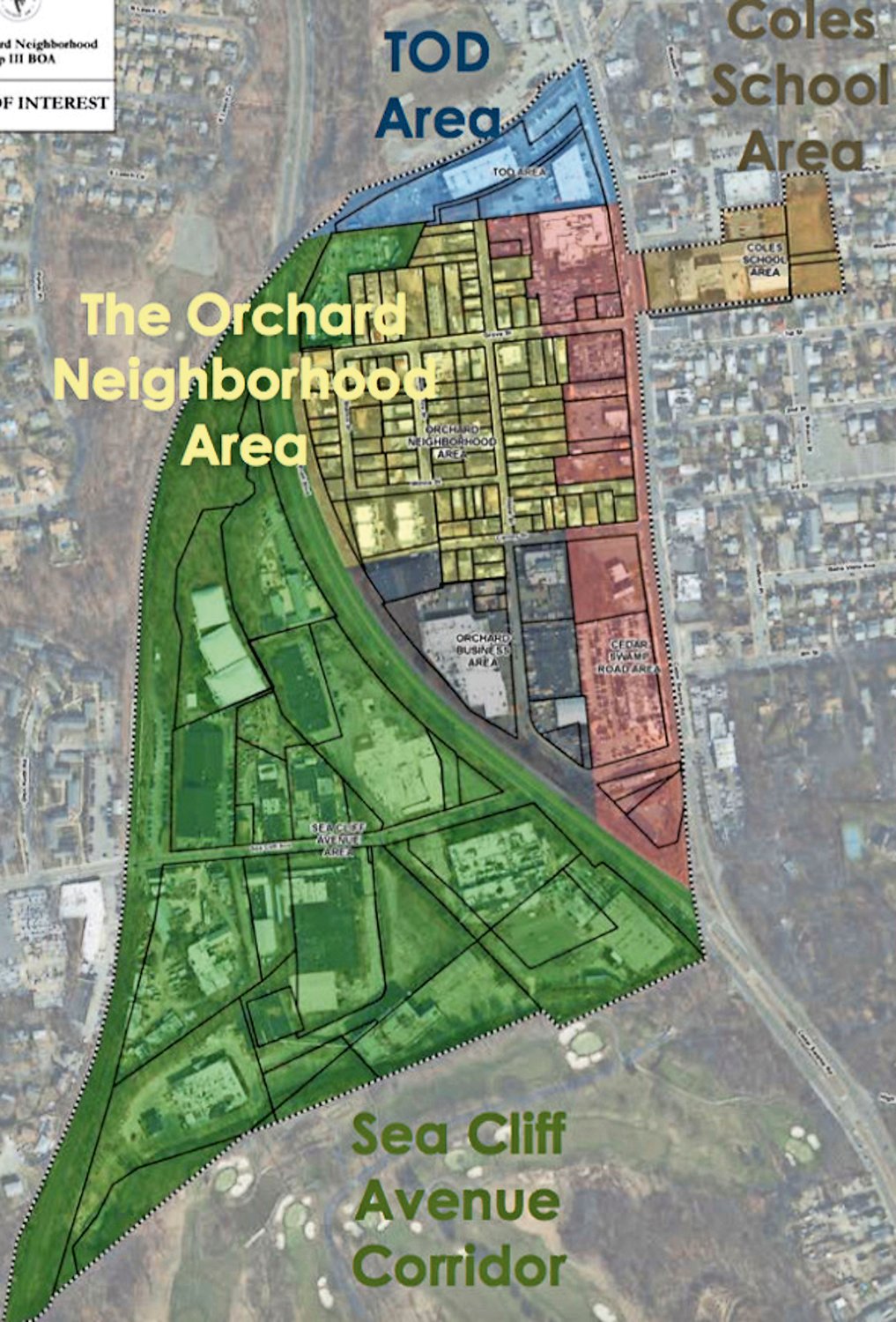Glen Cove looks at 'opportunity area' study
Hopes for smart development
City of Glen Cove officials would like to see more affordable housing and green spaces, with trees and shrubbery, in the Brownfield Opportunity Area, at the south entrance to the city’s bustling downtown.
That’s the conclusion of a generic environmental impact statement that the city had prepared for the area, known as the Orchard Neighborhood and Sea Cliff Avenue Corridor.
The statement, however, has not been made public yet, after the City Council moved to table discussion on the final version on Tuesday, saying officials needed more time to look it over before voting to approve it and release it.
Because the area is designated a Brownfield Opportunity Area, that allows city officials to seek state aid to undertake revitalization projects to improve the neighborhood. Brownfields are blighted areas where often there has been large-scale industrial contamination. The Brownfields Opportunity Area also includes the adjacent Cedar Swamp Road Area to the east, a Transit Oriented Development Area to the north and the Coles School Area to the northeast, now the site of the new Tiegerman Middle School.
Ann Fangmann, executive director of the Glen Cove Community Development Agency, is overseeing the area’s revitalization process, and urged the City Council to approve the environmental impact statement during a pre-council meeting on Sept. 17.
Fangmann explained that approving the statement wouldn’t mean the city was approving any development plans for the BOA yet. Instead, it would provide a framework for the city and future developers to follow.
Among the study’s recommendations was the need to improve walkability around the BOA. The city wants to see more pedestrian access to the Long Island Rail Road station on Glen Street, adequate off-street parking for new developments, new sections of sidewalk, updated street lighting, and conversion of Stanco Street from a one-way to a two-way street.
The recommendations also include a push for green infrastructure in any project approved in the Brownfields Opportunity Area. Any developers working in the neighborhood would be urged to use storm-water treatment practices that use plants and soil to remove pollutants from runoff; add rain garden and shade trees; and improve the parking lot on Capobianco Street.
One of the city’s newer ideas is the possible formation of a non-profit community land trust, which would represent residents of the Orchard Neighborhood and push for smart development and affordable housing in the area. The environmental impact statement recommends that 30 percent of the housing developed in the neighborhood be classified as affordable.
During previous public hearings on the BOA, however, including one on June 27, residents expressed concern that gentrification of the area could displace at least some now living there.
“There’s fear out there that if we accept this, it could snowball, and people are afraid of the BOA,” Councilman Joseph Capobianco said at the Sept. 17 pre-council meeting. “People are afraid of change in the neighborhood or changes in the character of the neighborhood.”
The last big change to the impact statement includes comments from the Town of Oyster Bay, a new partner in the Sea Cliff Corridor Avenue Area. Although the town owns part of the Photocircuits property, at 31 Sea Cliff Ave., its representatives had not mentioned any plans to redevelop the site until this year. During the summer public comment period, the town submitted its own suggestions of what should be included in the blighted area.
Oyster Bay spokesman Brian Nevin said the town “opposes any plans to construct a regional retail center at the site, but will consider recreational use, small-scale retail, office space, and research and development opportunities for the site.”
The generic environmental impact statement, if approved, would bar wholesale businesses such as Costco, which the city had considered allowing in the area in 2017.
Should the City Council approve the impact statement at its next meeting on Oct. 10, the statement and a summary would be released to the public 10 days later. Fangmann said that the approval would set a milestone for a project that has been in the works for nearly 10 years.
“We’re dictating what someone has to look at when they come in for a project,” he said. “Otherwise, the city has no role in trying to guide what they want to see in the area.”

 48.0°,
Overcast
48.0°,
Overcast 




